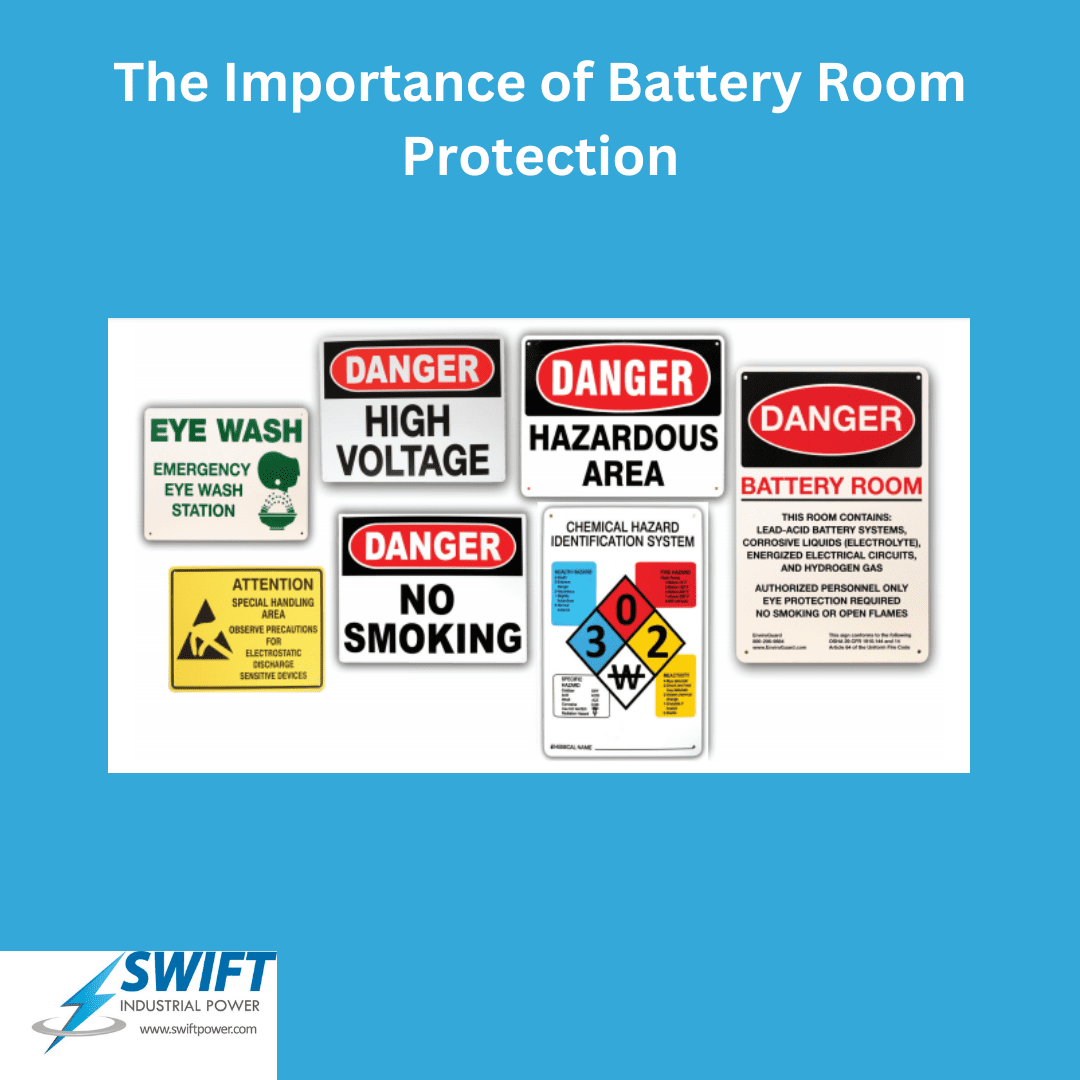Safety First: The Importance of Battery Room Protection
In the intricate ecosystem of industrial facilities and warehouses, where power is the lifeblood of operations, ensuring safety is paramount. Among the many components vital to this safety framework, one often overlooked yet critical aspect is battery room protection. Let’s delve into why prioritizing battery room protection is not just a choice but a necessity for any organization committed to the well-being of its employees, the integrity of its assets, and the continuity of its operations.
Understanding the Battery Room
Before we explore the importance of protection measures, let’s understand what the battery room entails. Battery rooms serve as centralized hubs for storing, charging, and maintaining batteries used in material handling equipment, backup power systems, and other industrial applications. These rooms house various types of batteries, including lead-acid and lithium-ion, which are essential for powering equipment and ensuring uninterrupted operations.
Identifying Risks and Hazards
Battery rooms, by their very nature, pose inherent risks and hazards that must be carefully managed. The charging process, for instance, generates hydrogen gas, which, if not properly ventilated, can accumulate and pose an explosion risk. Additionally, lead acid batteries contain electrolyte that can lead to spills while we’ve all heard concerns about lithium battery systems and fires.
Importance of Battery Room Protection
- Mitigating Safety Risks: Implementing robust protection measures helps mitigate the various safety risks associated with battery rooms, safeguarding personnel, equipment, and the surrounding environment against potential hazards.
- Ensuring Regulatory Compliance: Adhering to safety standards and regulations governing battery room operations is not only a legal obligation but also crucial for maintaining a safe working environment and avoiding costly penalties or liabilities.
- Preserving Asset Integrity: Proper protection measures help preserve the integrity of battery systems and infrastructure, prolonging their lifespan and reducing the risk of premature failures, downtime, and costly repairs or replacements.
- Safeguarding Business Continuity: By minimizing the likelihood of accidents, incidents, or emergencies in the battery room, organizations can ensure uninterrupted operations, protect productivity, and uphold customer commitments.
Key Protection Measures
- Ventilation Systems: Adequate ventilation is essential for dissipating hydrogen gas and preventing its accumulation to dangerous levels. Ventilation systems should be designed and maintained to meet recommended airflow requirements.
- Spill Containment: Installing spill containment systems, such as acid-resistant flooring and spill trays, helps contain and mitigate the impact of chemical spills, reducing the risk of environmental contamination and personnel exposure.
- Fire Detection and Suppression: Implementing fire detection and suppression systems, including smoke detectors, fire alarms, and fire extinguishers, enhances early warning capabilities and enables swift response in the event of a fire.
- Personal Protective Equipment (PPE): Providing appropriate PPE, such as safety goggles, gloves, and aprons, ensures that personnel handling batteries are adequately protected against chemical exposure, electrical hazards, and other risks.
Conclusion
In conclusion, battery room protection is not an option but a fundamental requirement for maintaining a safe and productive work environment in industrial settings. By proactively implementing and adhering to robust protection measures, organizations can mitigate safety risks, ensure regulatory compliance, preserve asset integrity, and safeguard business continuity. Investing in battery room protection is an investment in the well-being of employees, the longevity of assets, and the overall resilience of the organization. Remember, when it comes to battery room safety, it’s always safety first.

